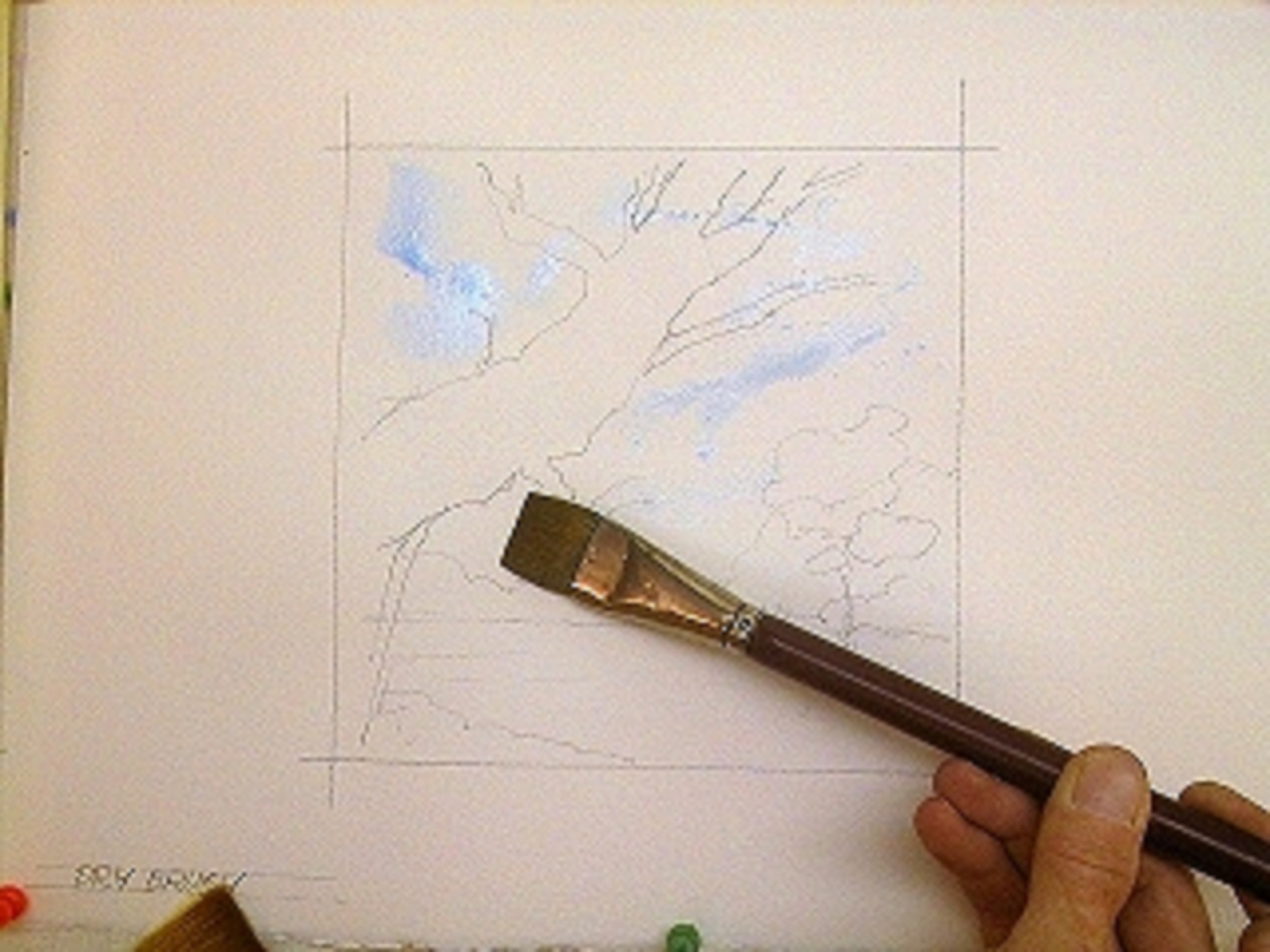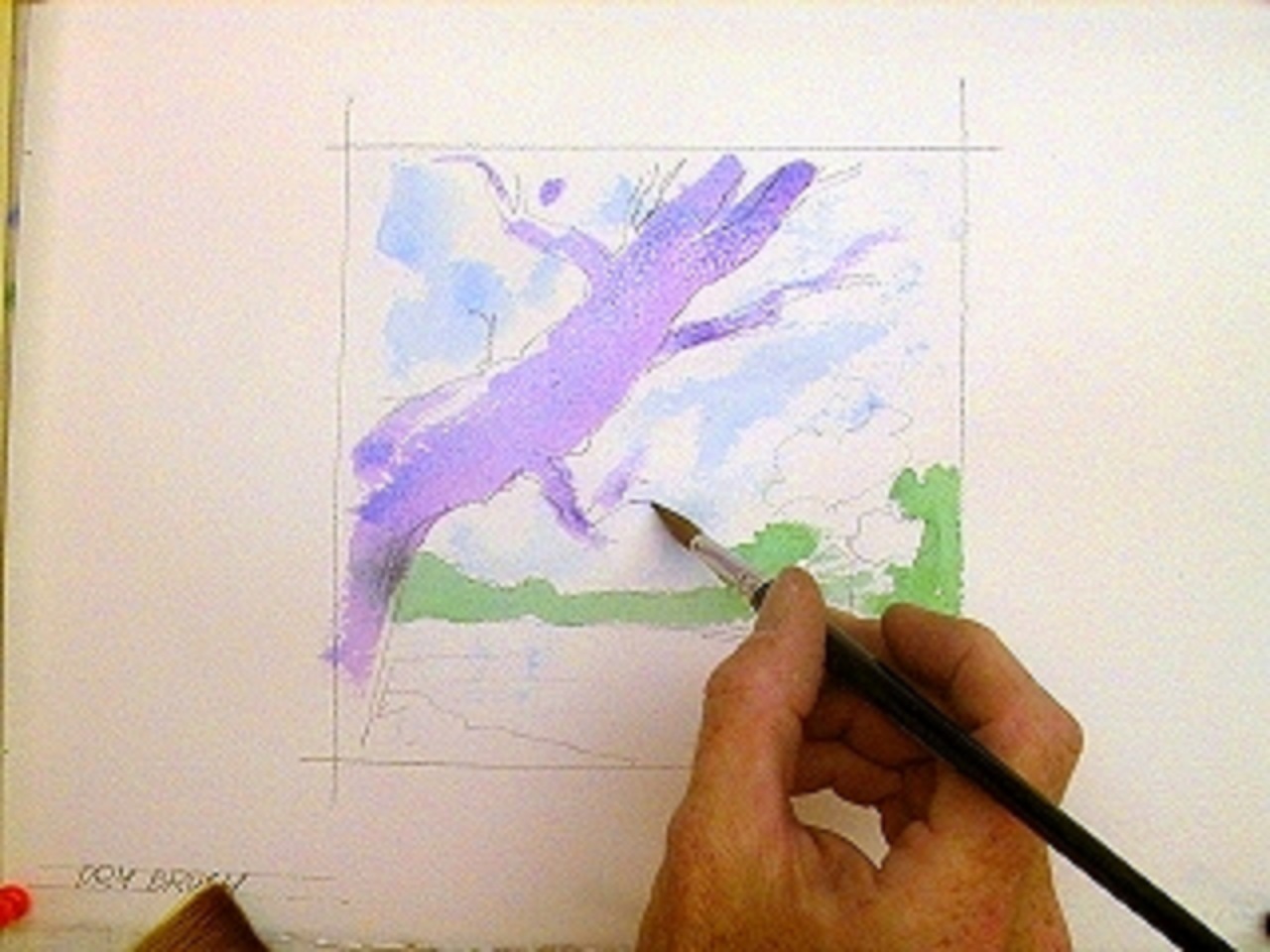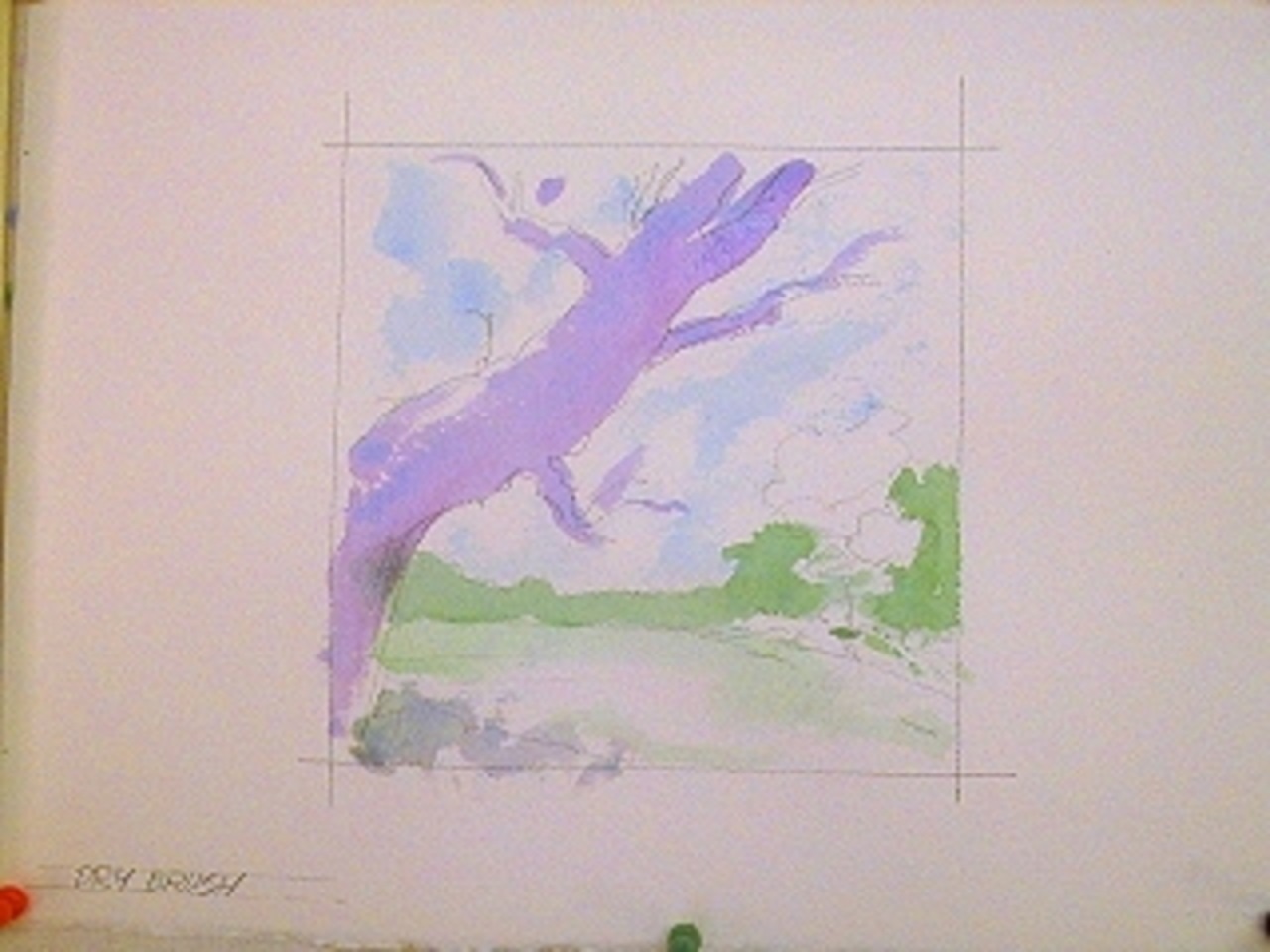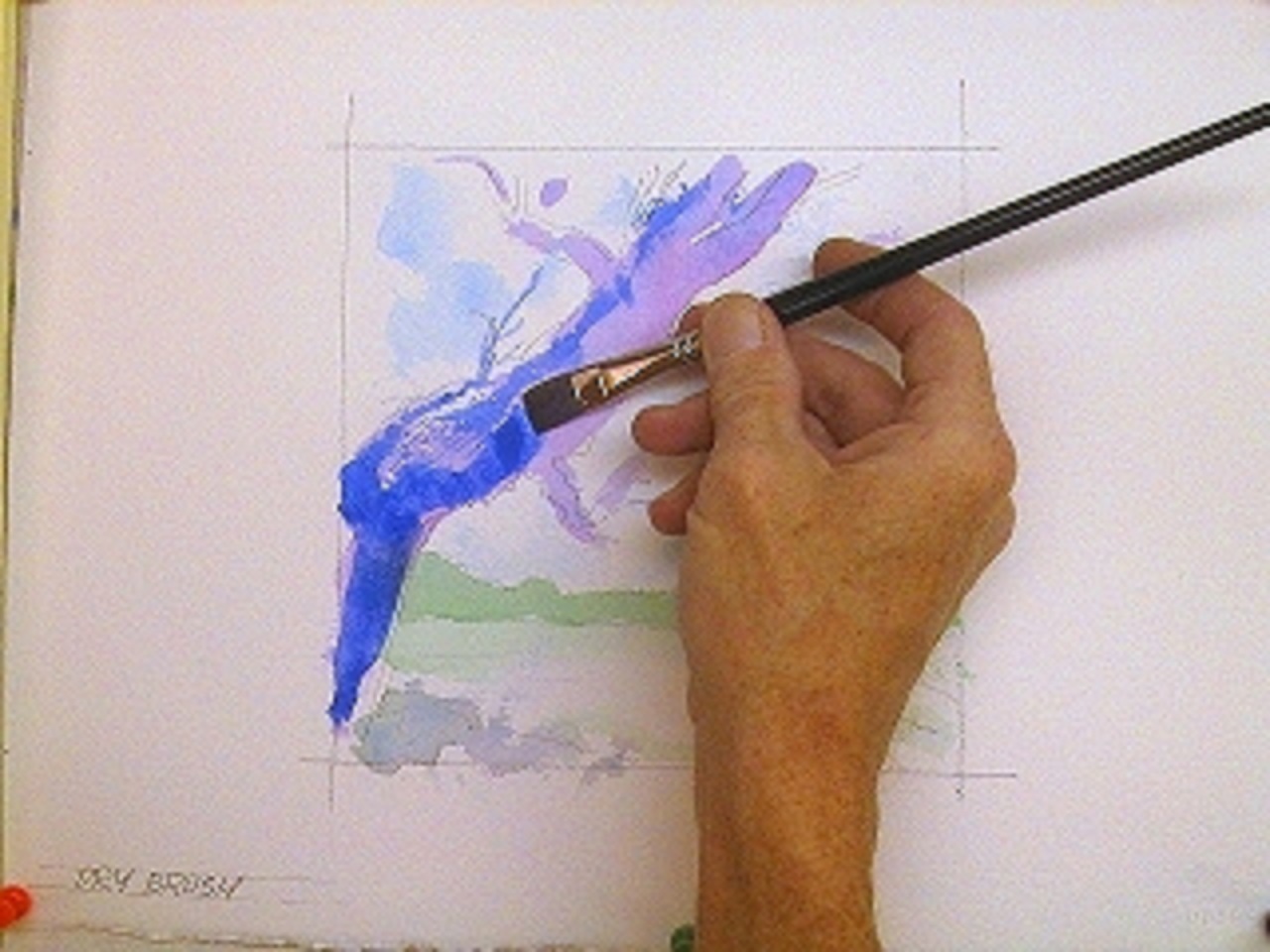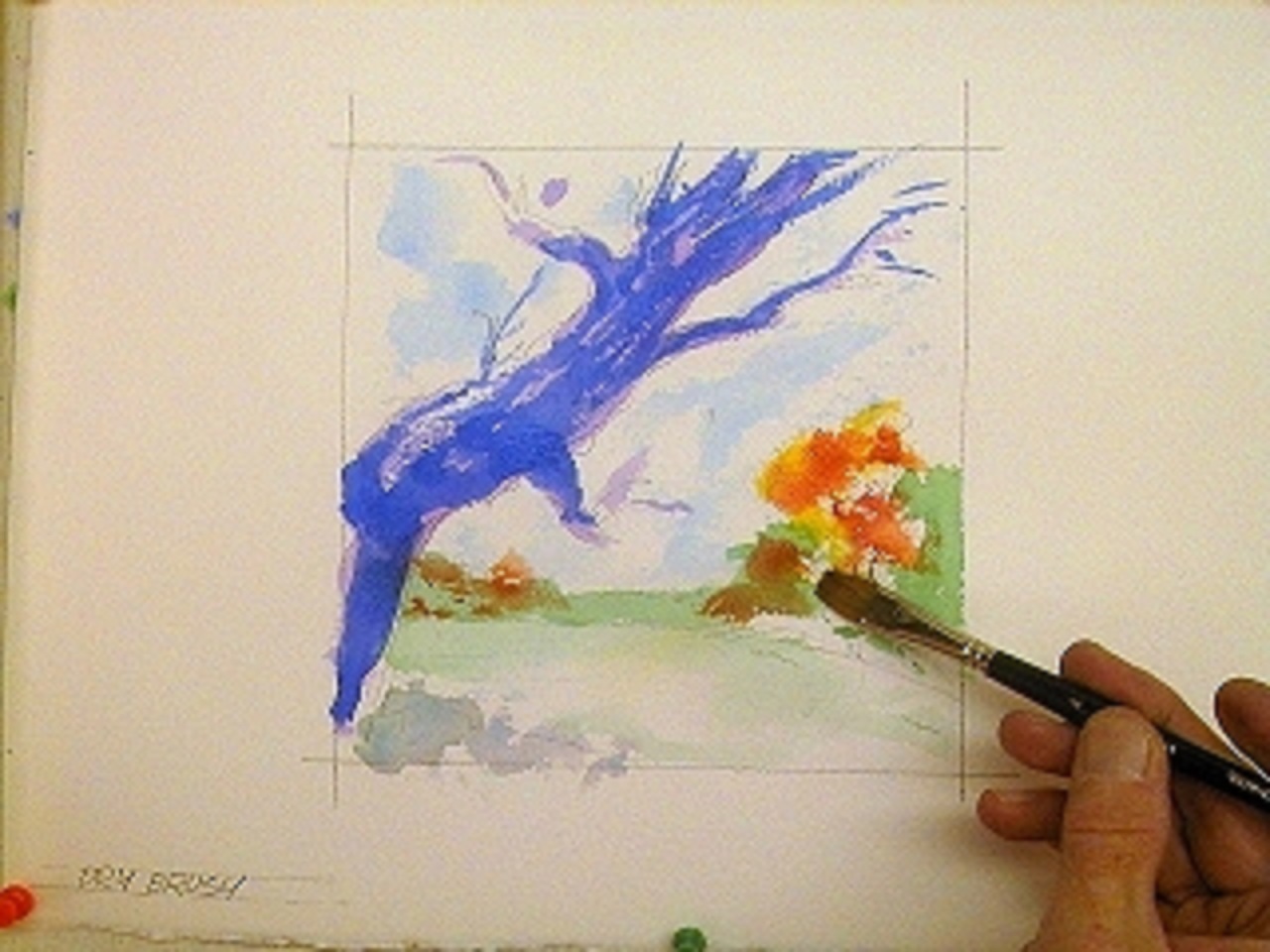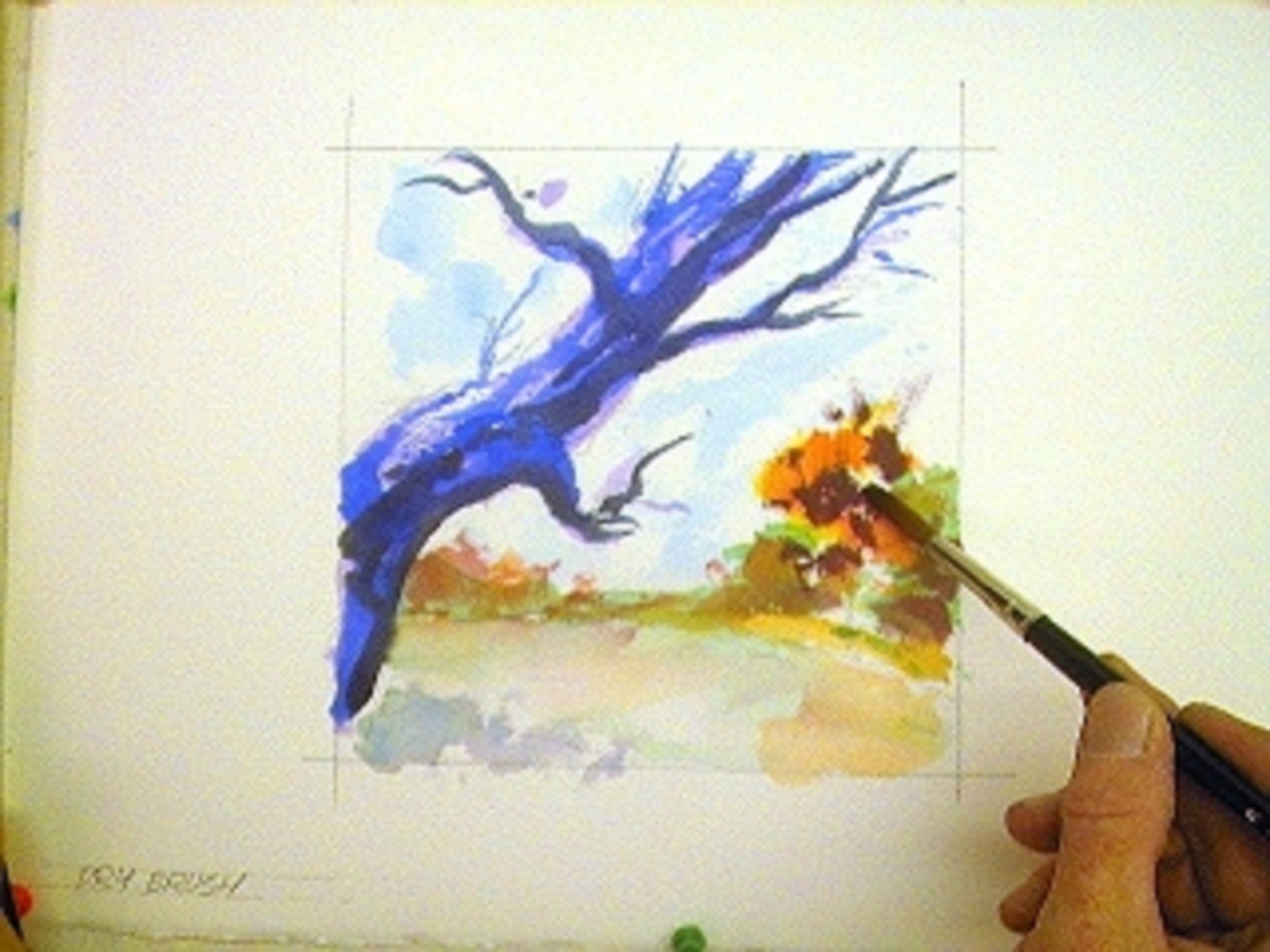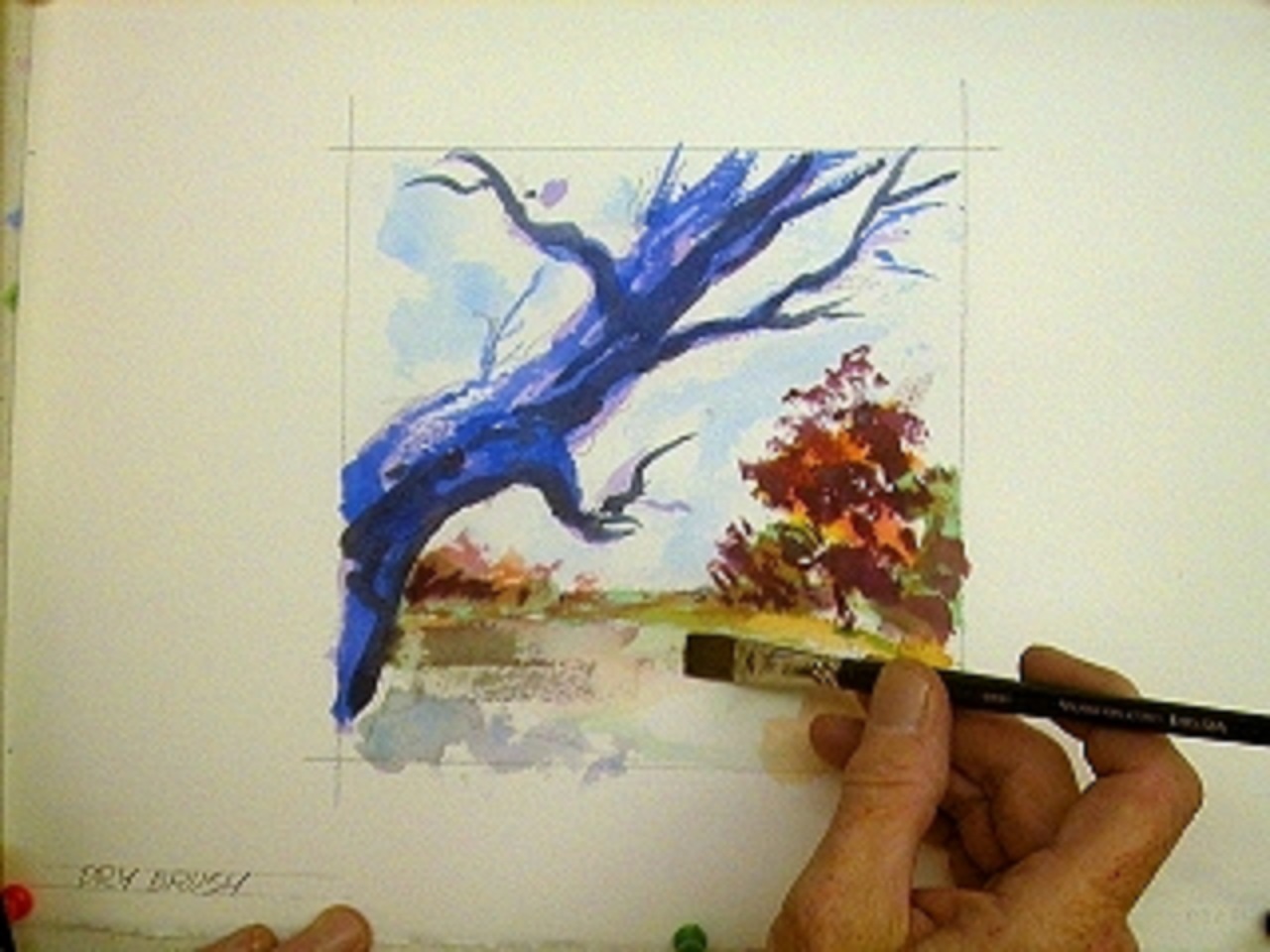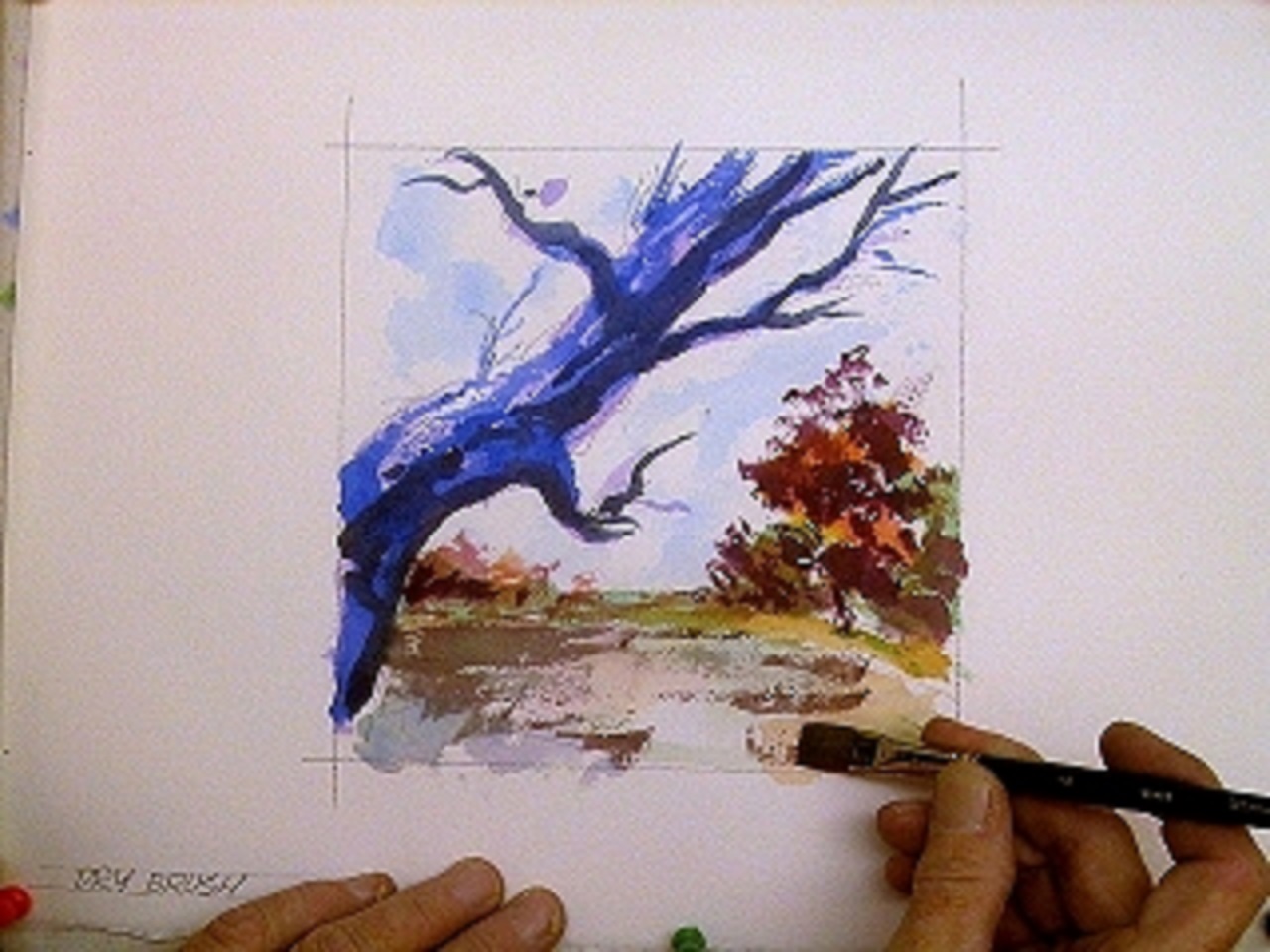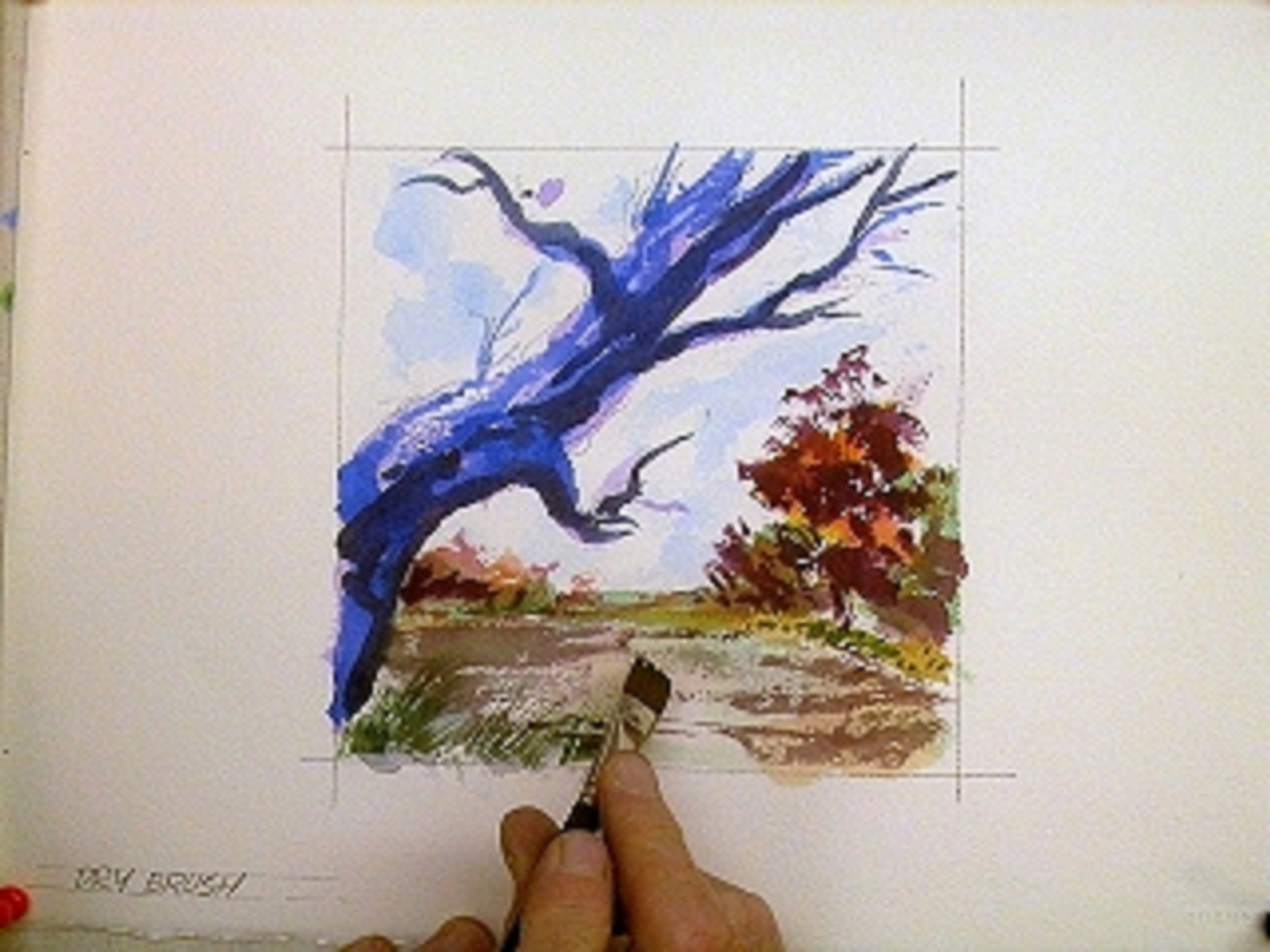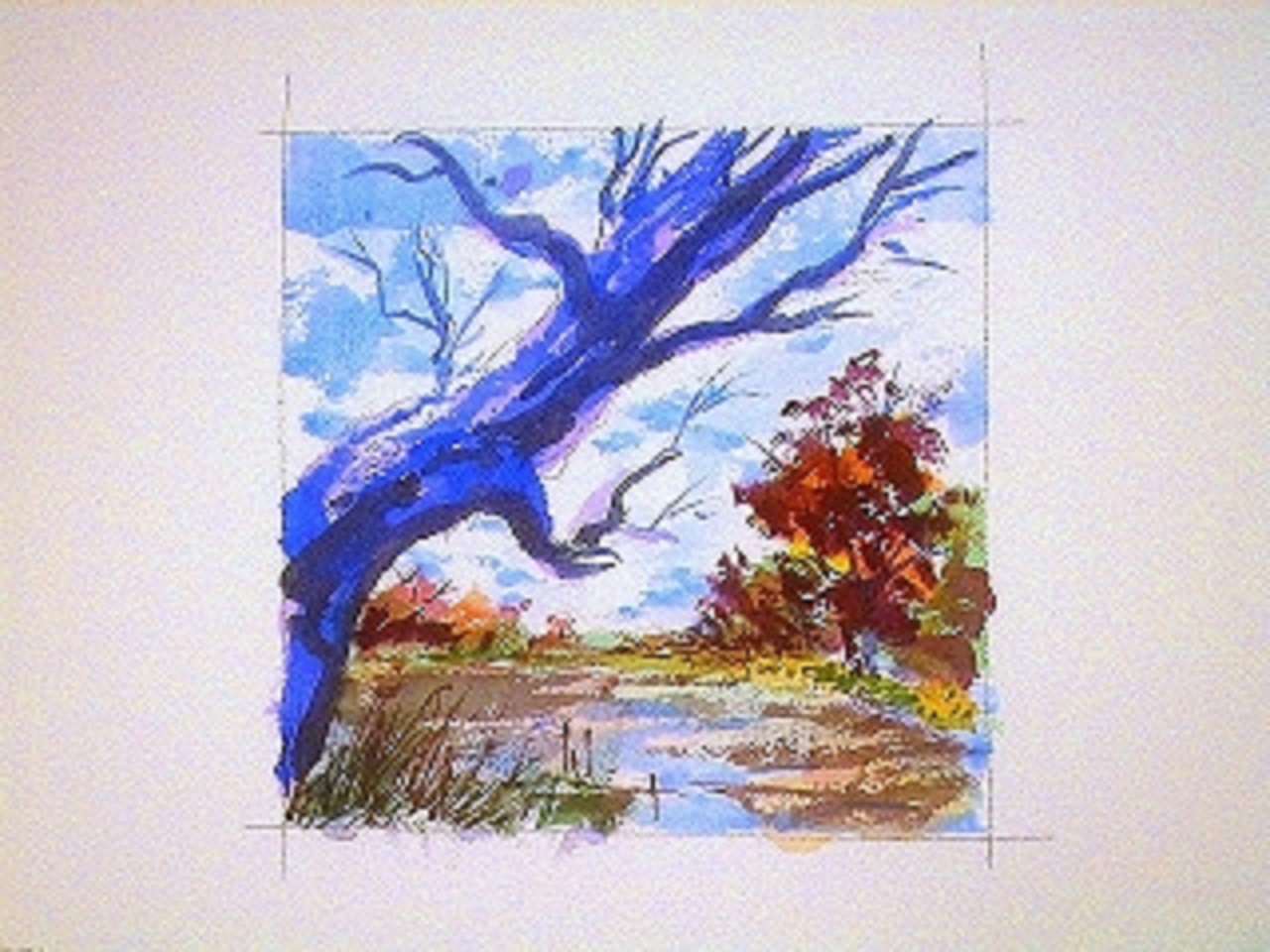A Watercolor Technique for Every Painter
MATERIALS USED: Arches 140lb cold press watercolor paper, Grumbacher 1" flat red sable, and Kolonok's #4 flat and #8 round Kolinsky red sable brushes. COLORS USED (various brands): Cadmium Yellow Medium, Cadmium Orange, Cadmium Red Medium, Alizarin Crimson, Cerulean Blue, Cobalt Blue, Ultramarine Blue, Hooker's Green Dark, Burnt Sienna, and Burnt Umber. First off, I lightly sketched a random landscape design on the watercolor paper using a #1 pencil. With a light wash of Cerulean Blue, I scumbled (i.e. light scrubbing motions) a rough sky in, dragging and pushing my 1" flat read sable to create texture.
Laying Some Foundation Washes
I wanted some underlying tones to dry brush the subsequent strokes over. I made a light wash of Hooker's Green Dark grayed with a touch of Alizarin Crimson, then painted the background tree line around what is now determined to be a lake using the #8 round red sable . Using a wash of Dioxazine Purple, I painted the shadow areas of the tree, keeping the edges rough with broken washes. While this was still wet I added some blue accents with a mix of Cobalt blue.
Letting the Underpainting Dry
I tried to keep the underpainting as dry and broken looking as possible, except for the lake area which needed some suggestions of the reflections and flow of the water. Using a gray made of Burnt Sienna, Cobalt blue and Hooker's Green Dark, I scruffed in a foreground bank area. I let the underpainting dry.
A Tree Emerges
I mixed up a strong blue wash from Cobalt and Ultramarine Blue using a #4 flat red sable. I apply a watercolor technique where I hold my brush at a rather severe angle so I can let it lay on the paper with varying pressure as I dragged strokes to create the shadows and texture on the tree trunk.
It's Fall!
After finishing the large tree trunk I decided it was fall (which it was at the time) and using all the Cadmium colors; yellow medium, orange, and red medium, I roughed in fall foliage with some rather garish colors. I used the Kolonok #4 flat red sable for these washes.
A Change in Plans
As I finished the riot of color on the far banks, I added a light wash of orange as a reflection in the lake of the large background tree followed by a run of pure Cadmium Yellow Medium down the bank under the far tree. I mixed a dark bluish gray from some Cobalt blue and Burnt Umber, then quickly drew in some dark accents strokes on the large tree trunk. At this point I considered the flaming trees and though of the dark maroon maple trees across the street. Using the underpainting as a base, I scrubbed in the main tree shape with a mixture of Alizarin crimson and Phthalocyanine green which gave an adequate maroon color. As I worked on the big maroon tree in, I relied on the natural spread of the #8 round red sable brush to help create convincing foliage textures.
The Classic Water Effect
I decided the water in lake would be a greenish brown. I used Hooker's Green Dark and Burnt Umber to get the color I wanted. I start dragging texture parallel with the horizon line, across the lake using the not-too-wet #4 flat red sable.
A Lake Appears Before Me
As I pulled each stroke across the lake, I varied pressure on the brush to create the "sparkly" water areas. TIP: If your brush is too wet, you'll lay a flat wash. Blot your brush on a flat damp sponge or paper towel to adjust the amount of paint in the brush.
A Little Detail and Punch Up
Using Hooker's Green Dark, I made a medium-toned puddle of paint. I used my #4 flat red sable brush, charged, and blotted. I tweaked it between my thumb and finger to spread the hairs a bit. Using an upward "flicking" motion, I added some grasses under the tree. I used some of the same color on the far bank.
Just a Minute, I'm Almost Done...
I decided the lake had some swampy areas near the shore, so I added some calligraphic indication of cattails. By now, the blue in the sky was looking a little too light. I mixed up some more Cerulean Blue, a little darker this time, and scumbled the sky areas again. Using the same blue and a #8 round red sable brush I added the sky color to the lake reflections. Finished! Hope you enjoyed that little easy yet effective technique.
Mijello Mission Gold Class Pure Pigment Watercolor MWC-1524P, 15ml x 24 Colors (7 Milliliter x 2ea)
